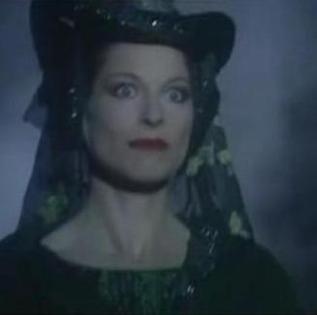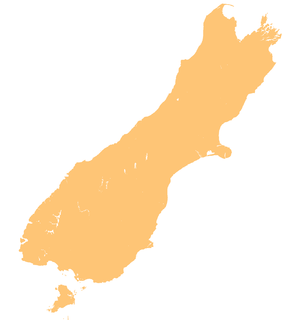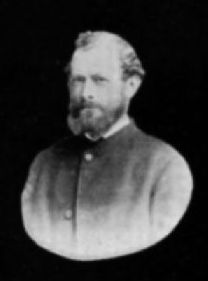Related Research Articles

The Chronicles of Narnia is a series of fantasy novels by British author C. S. Lewis. Written by Lewis, illustrated by Pauline Baynes, and originally published in London between 1950 and 1956, The Chronicles of Narnia has been adapted for radio, television, the stage, and film. The series is set in the fictional realm of Narnia, a fantasy world of magic, mythical beasts, and talking animals. It narrates the adventures of various children who play central roles in the unfolding history of the Narnian world. Except in The Horse and His Boy, the protagonists are all children from the real world who are magically transported to Narnia, where they are sometimes called upon by the lion Aslan to protect Narnia from evil. The books span the entire history of Narnia, from its creation in The Magician's Nephew to its eventual destruction in The Last Battle.

Narnia is a fantasy world created by C. S. Lewis as the primary location for his series of seven fantasy novels for children, The Chronicles of Narnia. The world is so called after the country of Narnia, in which much of the action of the Chronicles takes place.

Edmund "Ed" Pevensie is a fictional character in C. S. Lewis's The Chronicles of Narnia series. He is a principal character in three of the seven books, and a lesser character in two others.

Hampden, a small town in North Otago, New Zealand, lies close to the North Otago coast, 35 kilometres south of Oamaru and 80 kilometres north of the city of Dunedin, to both of which it is connected by State Highway 1.

The Chronicles of Narnia: The Lion, the Witch and the Wardrobe is a 2005 fantasy film co-written and directed by Andrew Adamson, based on the 1950 novel The Lion, the Witch and the Wardrobe, the first published and second chronological novel in C. S. Lewis's children's epic fantasy series, The Chronicles of Narnia. It was co-produced by Walden Media and Walt Disney Pictures and distributed by Buena Vista Pictures. William Moseley, Anna Popplewell, Skandar Keynes and Georgie Henley play Peter, Susan, Edmund, and Lucy, four British children evacuated during the Blitz to the countryside, who find a wardrobe that leads to the fantasy world of Narnia. There they ally with the lion Aslan against the forces of Jadis, the White Witch.

The Lady of the Green Kirtle, also called Queen of Underland and Queen of the Deep Realm, is the main antagonist in The Silver Chair by C. S. Lewis. She is sometimes called briefly the Green Lady, and she is known also as the Emerald Witch; neither name, however, appears in Lewis's text. She enslaved Prince Rilian of Narnia and a horde of gnomes by her witchcraft, and planned to use them to take over Narnia. She is foiled by three friends of Aslan: Eustace Scrubb, Jill Pole, and Puddleglum.

The Main South Line, sometimes referred to as part of the South Island Main Trunk Railway, is a railway line that runs north and south from Lyttelton in New Zealand through Christchurch and along the east coast of the South Island to Invercargill via Dunedin. It is one of the most important railway lines in New Zealand and was one of the first to be built, with construction commencing in the 1860s. At Christchurch it connects with the Main North Line to Picton, the other part of the South Island Main Trunk.
The Waimate Branch was a branch line railway built in southern Canterbury, New Zealand to link the Main South Line with the town of Waimate, the centre of the surrounding rural area. It opened in 1877 and operated until 1966; for some of this time, it included an extension to Waihao Downs that was known as the Waimate Gorge Branch or Waihao Downs Branch. When the line closed, Waimate received the dubious distinction of being New Zealand's first major town to lose its railway line.
The Ngapara and Tokarahi Branches were two connected railway branch lines in northern Otago, New Zealand, part of the national rail network. The Ngapara Branch opened in 1877 and almost all of it closed in 1959; the remaining few kilometres, called the Waiareka Industrial Line, were removed in 1997. The Tokarahi Branch branched off the Ngapara Branch. It operated from 1887 until 1930 and was originally known as the Livingstone Branch, though it never progressed beyond Tokarahi to Livingstone. In early 2008 there is a proposal to reinstate the first 4.5 km of the Ngapara Branch.
The Chronicles of Narnia series of films is based on The Chronicles of Narnia, a series of novels by C. S. Lewis. From the seven books, three were adapted—The Lion, the Witch and the Wardrobe (2005), Prince Caspian (2008), and The Voyage of the Dawn Treader (2010)—which collectively grossed over $1.5 billion worldwide.

Ngapara is a locality in the north Otago region of New Zealand's South Island. It is located in a rural setting 25 km inland from Oamaru. The name of Ngapara is derived from the Māori word for the "tables" or plateaus of limestone in the area.
The Kurow Branch was part of New Zealand's national rail network. In the North Otago region of the South Island, it was built in the 1870s to open up the land behind Oamaru for development, and closed in 1983.

Hakataramea, spelt Hakateramea in some older sources, is a rural village located in the southern Canterbury region of New Zealand's South Island. It is in the Waimate District and sits on the north bank of the Waitaki River at its confluence with the Hakataramea River.

Weston is a township situated 5 km (3.1 mi) inland from Oamaru, South Island, New Zealand. It is regarded as one of the more affluent townships of the Waitaki District and had a population of 730 in the 2006 census.

Windsor is a township in North Otago, 19 km (12 mi) inland from Oamaru, situated almost exactly on the 45th latitude.
Mount Ida is a former parliamentary electorate in the Otago region of New Zealand, from 1871 to 1893, and then from 1902 to 1908.
Flock Hill station is located in New Zealand's South Island high country, in the Waimakariri River basin, just 75 minutes drive from Christchurch on State Highway 73 which is now commonly known as The Great Alpine Highway between Castle Hill Station and Cass near Lake Pearson.
The following outline is provided as an overview of and topical guide to Narnia:

The Elephant Rocks near Duntroon in North Otago, New Zealand, are a collection of large weathered limestone rocks. They are located on a private farm 5 kilometres (3 mi) south of Duntroon, in the Maerewhenua Valley. The wider area around Duntroon is known for its interesting geology and preserved fossils.

William Henry Valpy Jr. was one of the earliest settlers of Otago.
References
- ↑ Gordon Parry, National Mortgage and Agency, the first 100 years, Dunedin 1964
- ↑ "Tokarahi". The Cyclopedia of New Zealand (Otago and Southland Provincial Districts). Christchurch: The Cyclopedia Company Limited. 1905.
- ↑ Filming locations for The Chronicles of Narnia: The Lion, the Witch and the Wardrobe